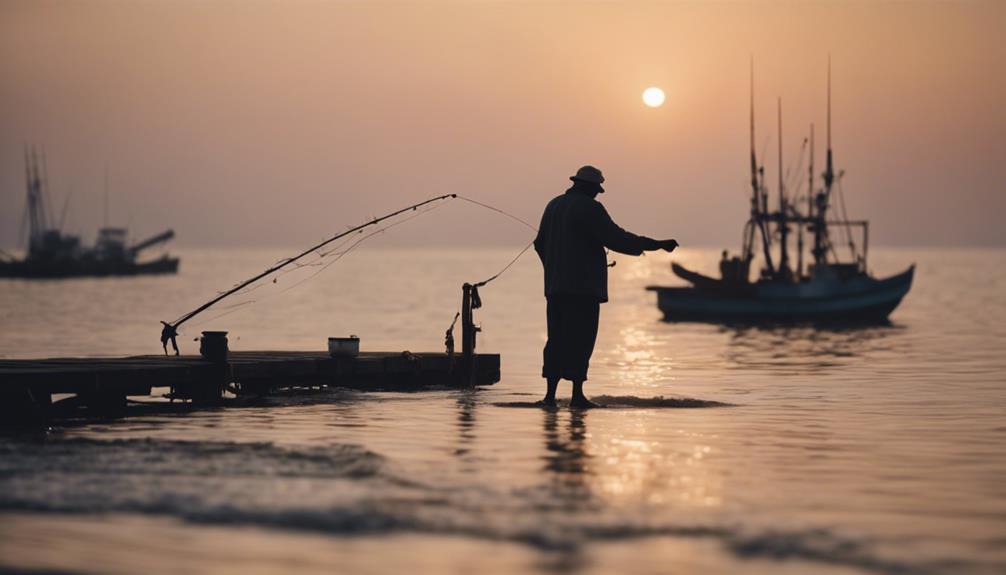Fishing for flies is an exciting and rewarding way to engage with nature and enjoy the peacefulness of the great outdoors. Whether you’re a seasoned angler or a novice looking to dip your toes into the world of fly fishing, understanding the nuances of this unique fishing style is essential. In this guide, we will explore everything you need to know about fishing for flies, from the basics of equipment to advanced techniques and tips for success.
Understanding the Basics of Fishing for Flies
Fishing for flies, often referred to simply as fly fishing, involves using artificial flies made of feathers, fur, and other materials to attract fish. Unlike traditional fishing, which typically employs bait and hooks, fly fishing relies on the skillful casting of lightweight flies that mimic the natural food source of the fish. Understanding the anatomy of a fly is crucial; it consists of a hook, a body, and often a tail or wings that imitate insects and other prey. Beginners should familiarize themselves with various fly patterns, as each is designed to target specific fish species and their preferred habitats.
Essential Gear for Fly Fishing Success
To get started with fishing for flies, you’ll need some essential gear. The primary components include a fly rod, reel, line, and, of course, a selection of flies. A fly rod typically ranges from 8 to 9 feet in length and is designed to cast lightweight flies with precision. The reel should be matched to the rod and line weight, ensuring a balanced setup. Fly lines come in various types, including floating, sinking, and intermediate lines, each suited for different fishing conditions. Lastly, having a good selection of flies is critical; consider carrying a mix of dry flies, wet flies, nymphs, and streamers to adapt to changing conditions and fish behavior.
Choosing the Right Location for Fly Fishing
When fishing for flies, location is key. Different bodies of water are home to distinct fish species, and knowing where to cast your line can significantly impact your success. Rivers, streams, lakes, and ponds all offer unique opportunities for fly anglers. Look for locations with ample food sources like insects and baitfish, as these attract fish. Additionally, consider the time of year and water temperature, as these factors influence fish activity. Popular fly fishing spots often include areas with riffles, pools, and undercut banks, where fish tend to hide and ambush prey.
Basic Casting Techniques for Fly Fishing
Mastering the casting technique is fundamental when fishing for flies. Unlike traditional fishing, where a simple overhead cast may suffice, fly fishing requires more finesse. The most common cast is the overhead cast, which involves lifting the rod to create tension in the line and then swiftly moving it forward to release the fly. Practice is essential; aim for smooth, fluid motions rather than abrupt jerks. Additionally, learn the roll cast, which is particularly useful in tight spaces or when obstacles are present. Developing a consistent and accurate casting technique will enhance your overall fly fishing experience.
Understanding Fish Behavior and Feeding Habits
To be successful in fishing for flies, it’s crucial to understand fish behavior and feeding habits. Fish are more likely to bite when they’re actively feeding, which usually occurs during specific times of the day, such as dawn and dusk. Observing the water for signs of feeding fish, such as jumping or rising to the surface, can provide valuable clues. Additionally, fish tend to follow seasonal patterns; for example, they may feed more aggressively in the spring and fall. Familiarizing yourself with the local ecosystem, including the types of insects present, can help you choose the right fly patterns to mimic their natural prey.
Tips for Selecting the Right Flies
Selecting the right flies is vital when fishing for flies. The best approach is to match your fly selection to the insects currently hatching or present in the water. This strategy, known as “matching the hatch,” involves observing the size, color, and behavior of local insects and selecting a fly that closely resembles them. Additionally, consider the water conditions; for example, during low light conditions, darker flies may be more effective, while brighter flies can work well in the bright sun. Building a diverse fly box with various patterns and sizes ensures you’re prepared for any situation you encounter on the water.
Practicing Catch and Release for Sustainable Fishing
As you immerse yourself in fishing for flies, it’s essential to consider the impact of your fishing practices on the environment. Practicing catch and release is a sustainable approach that helps preserve fish populations and their habitats. When releasing fish, handle them carefully to minimize stress and injury; wet your hands before touching them and avoid leaving them out of the water for extended periods. By prioritizing sustainable fishing practices, you contribute to the health of aquatic ecosystems and ensure that future generations can enjoy the thrill of fly fishing.
Conclusion: Embracing the Joy of Fishing for Flies
Fishing for flies is more than just a sport; it’s an opportunity to connect with nature, challenge your skills, and enjoy peaceful moments on the water. By understanding the basics of fly fishing, investing in the right gear, mastering casting techniques, and respecting the environment, you can enhance your experience and increase your chances of success. Whether you’re seeking solitude or camaraderie, fishing for flies offers a unique blend of adventure and tranquility. So grab your rod, choose your flies, and head out to explore the beautiful world of fly fishing. Happy casting!
